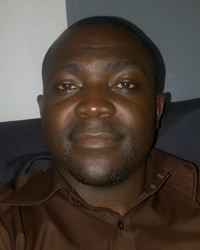Nungu, Rindre in Nigeria

Photo Source:
Anonymous
|
Send Joshua Project a map of this people group.
|
| People Name: | Nungu, Rindre |
| Country: | Nigeria |
| 10/40 Window: | Yes |
| Population: | 106,000 |
| World Population: | 106,000 |
| Primary Language: | Nungu |
| Primary Religion: | Ethnic Religions |
| Christian Adherents: | 34.00 % |
| Evangelicals: | 5.00 % |
| Scripture: | Translation Started |
| Ministry Resources: | No |
| Jesus Film: | No |
| Audio Recordings: | Yes |
| People Cluster: | Benue |
| Affinity Bloc: | Sub-Saharan Peoples |
| Progress Level: |
|
Introduction / History
The Rindre people are among the large ethnic groups found around the North Central region of Nigeria. They number a little more than a million spread in different parts of Country and in the Diaspora. Effort to get the recent population census proves abortive, their number continue to grow every day as they continue to intermarry. While some of them remain as Rindre in the new communities, others neutralize and change their identities in their new host communities after migration.
Oral traditions regarding the origin of the Rindre people are shrouded in a plethora of versions, each making a persuasive and convincing claim of authenticity. Whether some of them are fictive and pantomimic, they are most convincingly chronicled in Rindre songs, folktales, legends and proverbs.
The stories about the origin of Rindre people have been narrowed down to two probable sources. One version promotes the Kwararafa migration while the other champions the Kuti tradition. These two versions make equal claims but neither has either unequivocally been confirmed or outright discarded.
The first school of taught maintained that Kwararafa kingdom witnessed great depression, which led to the migration of some of its members to various parts of the world, Rindre inclusive. While the second school of taught based their argument on the archeological findings recently excavated in Wamba which was carbon dated to about 500 BC.
History has it that Wamba has been a British reserved area since the late 19th century; it was named a district in 1921 by the then Lord Lugard's administration.
The continued growth of population and the increasing socialization that took place among the Rindre people led to the spread of the Rindre from Wamba to various part of Nasarawa and Kaduna State of Nigeria.
Today, most Rindre people who migrated have continued to change their identity to enable them fit into their new environment. Some changed their names into Hausa, English, Arabic and Hebrew names, others bear names of neighboring tribes like the Eggon, Mada, and even some southern Kaduna language names, thereby reducing the population of the Rindre and adding such to other tribes.
Where Are they Located?
Rindre's settlements include: Awuma in Lafia LGA Nasarawa State, Agwan Nungu Lafia, Gidan Mai Akuya Lafia, Gaji – Akun Development Area, Fadama – Akun Development Area, Gudi – Agidi Development Area, Agamati – Kaduna, Gada Mai Rumpa – Kaduna, Jagindi – Kaduna, Dogon Daji – Kaduna, Wasa – Kaduna, Kogon – Kaduna, Farin Ruwa Waterfalls.
Also in: Sabon Gida Kireyi, Wakwa, Lahuci, Bakin Rijiya, Sabon Dale, Adogi, Yelwata Wuji, Abu, Gidan Mai-Akuya and Ashige.
What Are Their Beliefs?
The Rindre religion is animistic and numerous gods were worshipped just like the Yoruba and the Igbo in the south and east respectively. Rindre gods include:
1. Kutie, considered to be the biggest among all the gods. Only adults who have passed through the Shiuti are allowed to communicate to Kutie.
2. Mbuka, considered to be the god of harvest.
3. Lambu, considered to be the god of merriment, usually appearing during women's ceremonies.
4. Mbgasa, considered as the god of discipline, usually appears to create sanity in terms of discipline in the society.
5. Manga, the god of initiation, is responsible in recruiting the youth into adulthood.